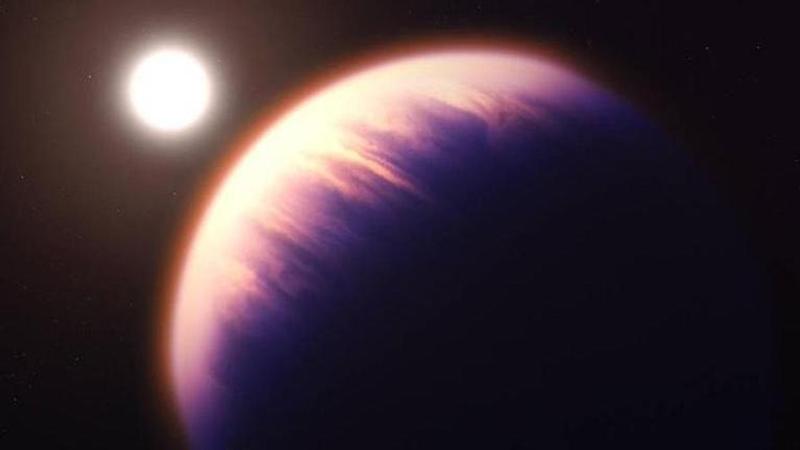Published 15:02 IST, November 23rd 2022
NASA's Webb telescope uncovers 'full menu' of exoplanet atmosphere in historic discovery
NASA's Webb telescope has added another feather to its cap with the unveiling of an atmosphere like never been seen before in the exoplanet WASP-96B.

The James Webb Space Telescope has added another feather to its cap with the unveiling of an exoplanet’s atmosphere like never been seen before. NASA revealed that the $10 billion observatory has found the first evidence of sulfur dioxide in a planet outside our solar system, presented the first evidence of photochemistry in a far-away world, confirmed the presence of broken clouds, and discovered a few clues into how this planet might have formed.
The exoplanet in conversation is the WASP-96B, which is located around 700 light years away and was used to train Webb’s array of highly sensitive instruments. This planet is classified as a ‘hot Saturn’ meaning it is as big as Saturn but in a tight orbit around its star, eight times shorter than Mercury’s around the sun. Notably, this is the same exoplanet where carbon dioxide was first discovered by Webb in August. The telescope uses its spectrographs for such discoveries which breaks light beams into spectra like a 'barcode' and studies the information about atoms and molecules stored in them.
Webb’s marks another milestone
NASA says that Webb has presented a ‘full menu’ of atoms and molecules in WASP-96B’s atmosphere along with the evidence of active chemistry in the planet’s fragmented clouds. In addition to this, Webb also discovered that WASP-39B’s atmosphere contains sulfur dioxide (SO2) produced from chemical reactions triggered by high-energy light from the planet’s parent star. This discovery is significant because the ozone layer in Earth’s upper atmosphere is created in a similar way thus becoming a fundamental ingredient for life.
“The abundance of sulfur [relative to] hydrogen indicated that the planet presumably experienced significant accretion of planetesimals that can deliver [these ingredients] to the atmosphere,” Kazumasa Ohno, a researcher who worked on Webb data, said in an official statement. “The data also indicates that oxygen is a lot more abundant than carbon in the atmosphere. This potentially indicates that WASP-39 b originally formed far away from the central star.”
Apart from Sulfur, carbon dioxide and carbon monoxide were also detected in much higher resolution than previous findings whereas elements like methane and hydrogen sulfide are expected to be present in lower levels if any. Scientists say that having a complete ‘menu’ of chemical ingredients in an exoplanet atmosphere gives a glimpse of the abundance of different elements and ultimately provides insight into the formation of WASP-96B, which is believed to have emerged out of the disk of gas and dust surrounding the parent star.
Updated 15:02 IST, November 23rd 2022



